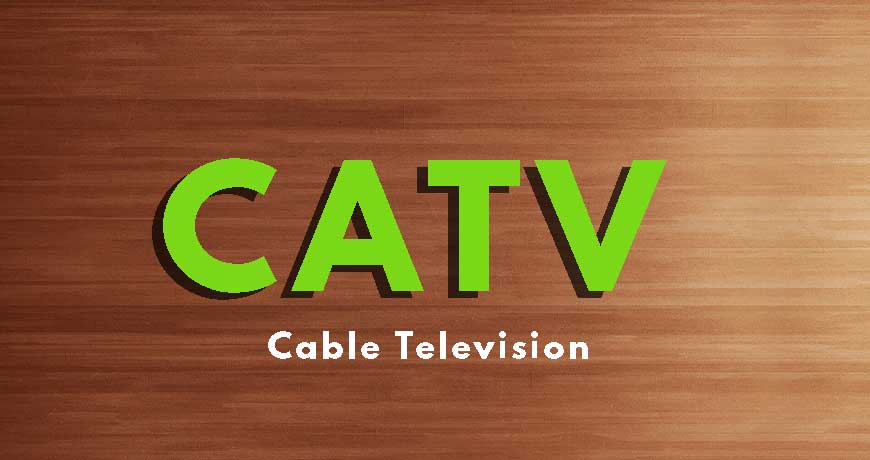Cable Television(CATV) Leave a comment
Cable television is a system of delivering television programming to paying subscribers via radio frequency (RF) signals transmitted through coaxial cables or, in the 2010s, light pulses through fiber-optic cables. This contrasts with broadcast television, in which the television signal is transmitted over the air by radio waves and received by a television antenna attached to the television. FM radio programming, high-speed Internet, telephone services, and similar non-television services may also be provided through these cables. Analog television was standard in the 20th century, but since the 2000s, cable systems have been upgraded to digital cable operation.
A “cable channel” (sometimes known as a “cable network”) is a television network available via cable television. When available through satellite television, including direct broadcast satellite providers such as DirecTV, Dish Network and BSkyB, as well as via IPTV providers such as Verizon FIOS and AT&T U-verse is referred to as a “satellite channel”. Alternative terms include “non-broadcast channel” or “programming service”, the latter being mainly used in legal contexts. Examples of cable/satellite channels/cable networks available in many countries are HBO, MTV, Cartoon Network, E!, Eurosport and CNN International.
The abbreviation CATV is often used for cable television. It originally stood for Community Access Television or Community Antenna Television, from cable television’s origins in 1948. In areas where over-the-air TV reception was limited by distance from transmitters or mountainous terrain, large “community antennas” were constructed, and cable was run from them to individual homes. The origins of cable broadcasting for radio are even older as radio programming was distributed by cable in some European cities as far back as 1924.



